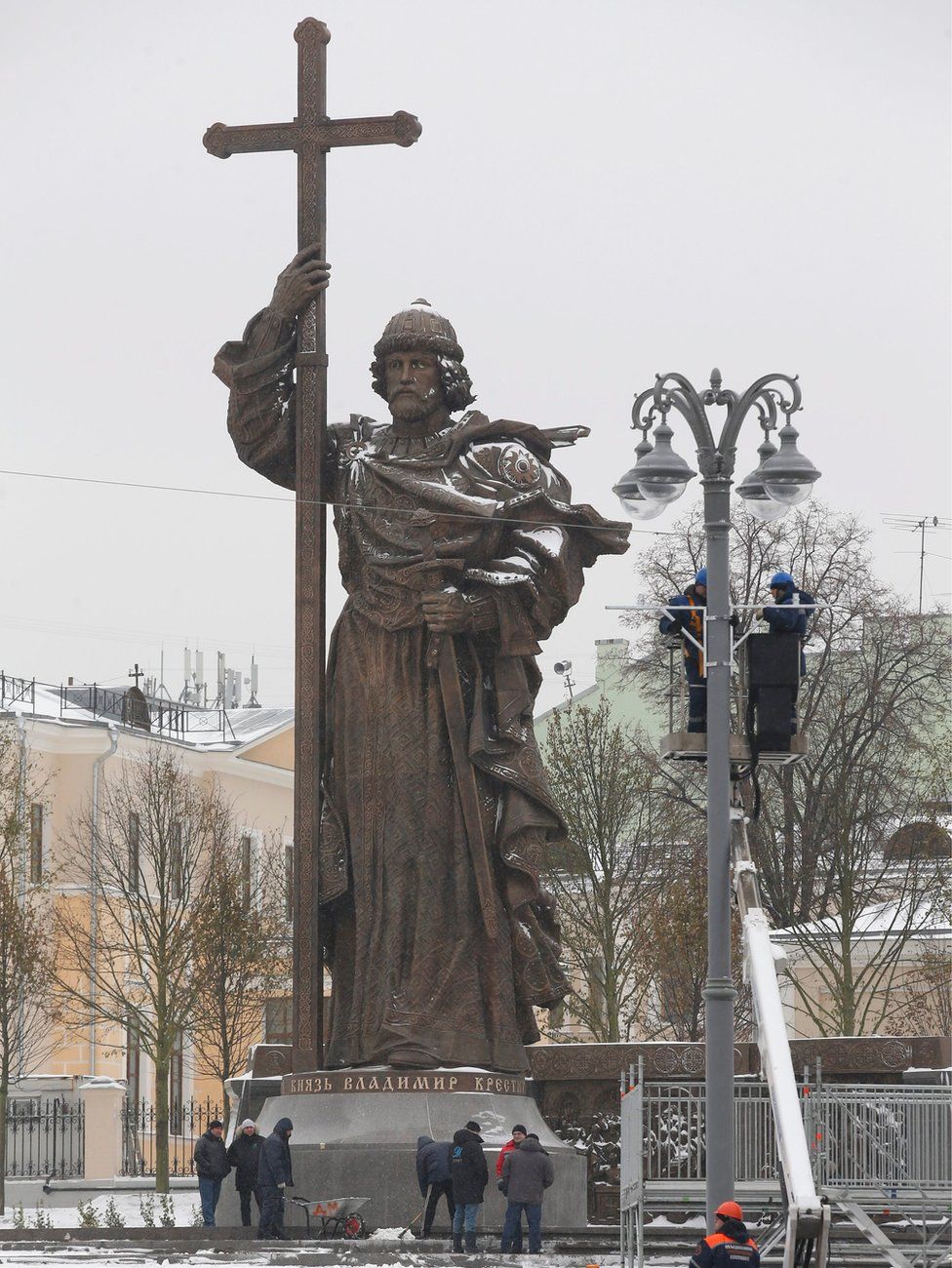Putin unveils 'provocative' Moscow statue of St Vladimir
-
Published

Russian President Vladimir Putin has unveiled a controversial statue to his namesake - St Vladimir - in Moscow.
Also known as Vladimir the Great, the 10th Century prince was one of the rulers of the first eastern Slav proto-state, based in Kiev.
He is credited with the introduction of Orthodox Christianity.
But the figure is claimed by both Russia and Ukraine as a founding father, and critics have accused Moscow of a provocative gesture.
The 16m (52ft) statue was inaugurated on National Unity Day - a national holiday revived by President Putin in 2005.
It is also a feast day in the Russian Orthodox Church, whose ultra-conservative leadership is close to Mr Putin.
The Church's head, Patriarch Kirill, joined President Putin for Friday's ceremony.
Initial proposals to erect a 25m-high monument on Moscow's famous Sparrow Hills were scrapped after fears the site would become unstable.
It was finally decided that the monument would be put up just outside the Kremlin, a World Heritage Site, but with a reduced height.
Russia annexed Crimea from Ukraine in 2014 and bilateral tensions are high.
St Vladimir - called St Volodymyr in Ukraine - converted Kievan Rus to Christianity in 988 in Kiev. A monument was built in Ukraine's capital in the 19th Century to commemorate the event.
-
-
Published28 July 2015
-
-
-
Published17 March
-
-
-
Published14 August 2016
-